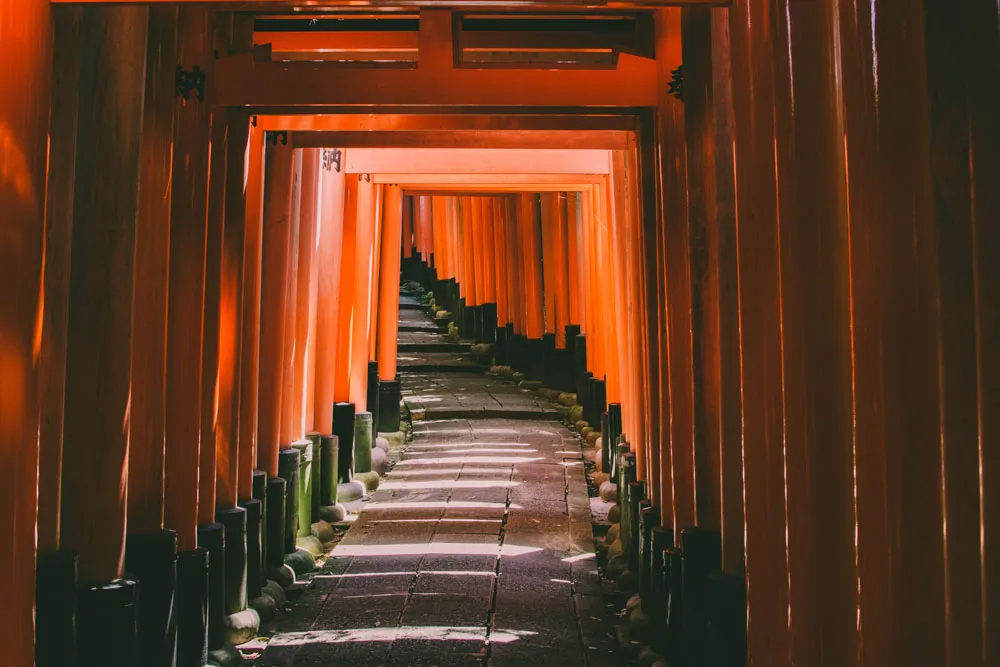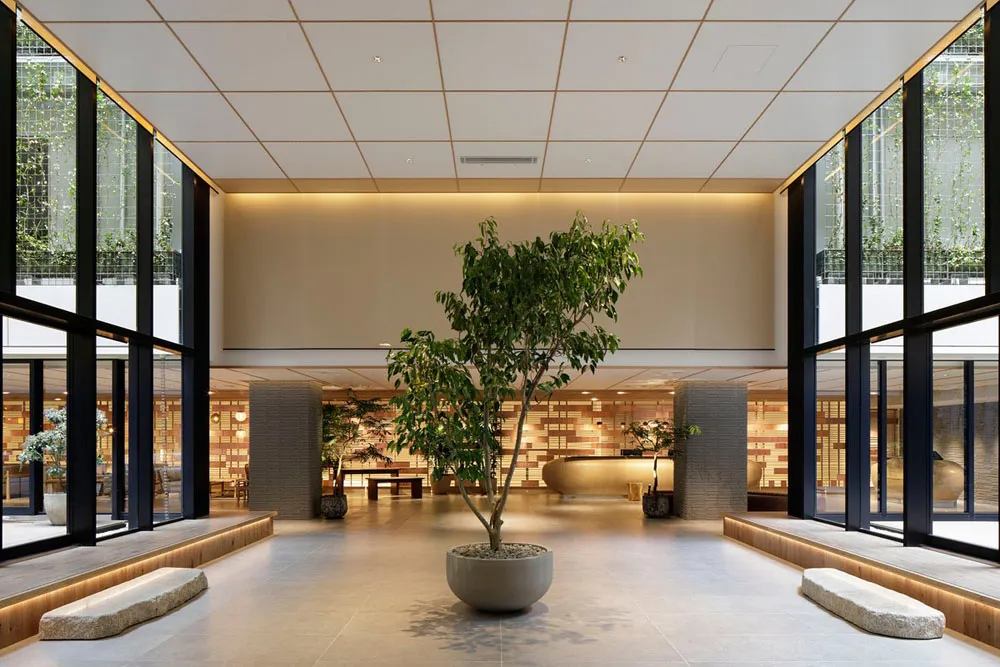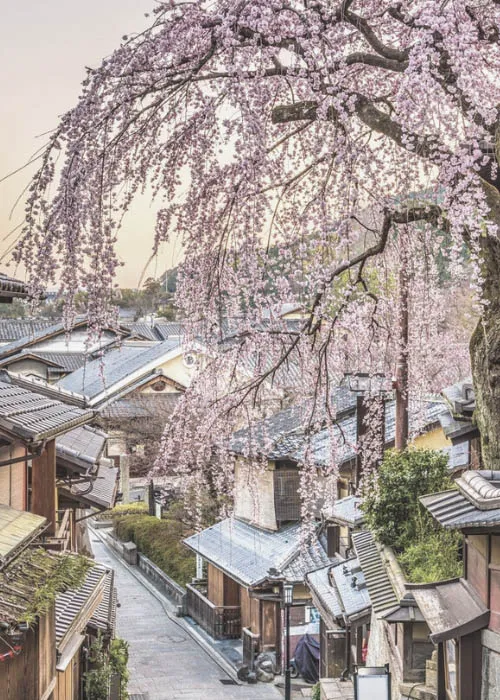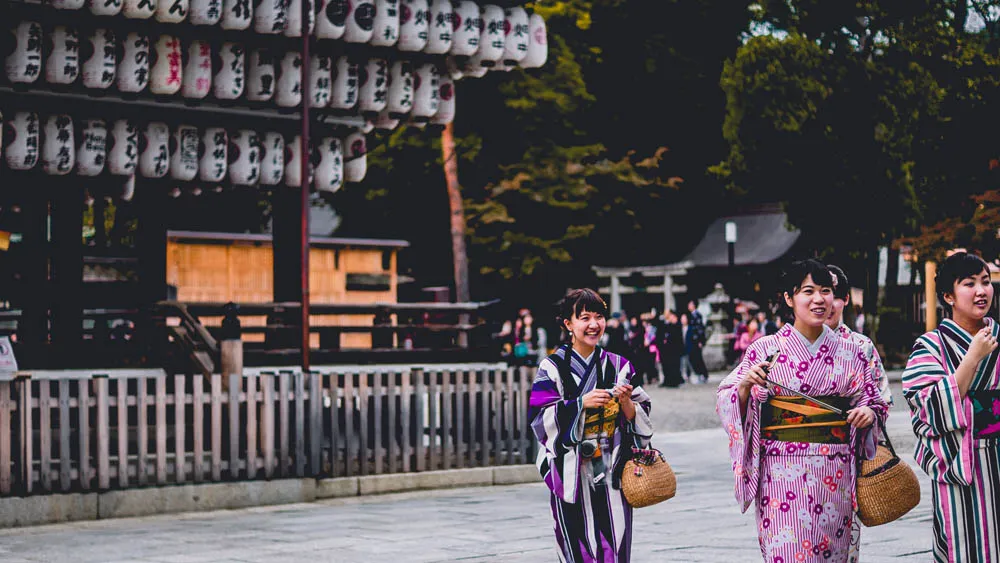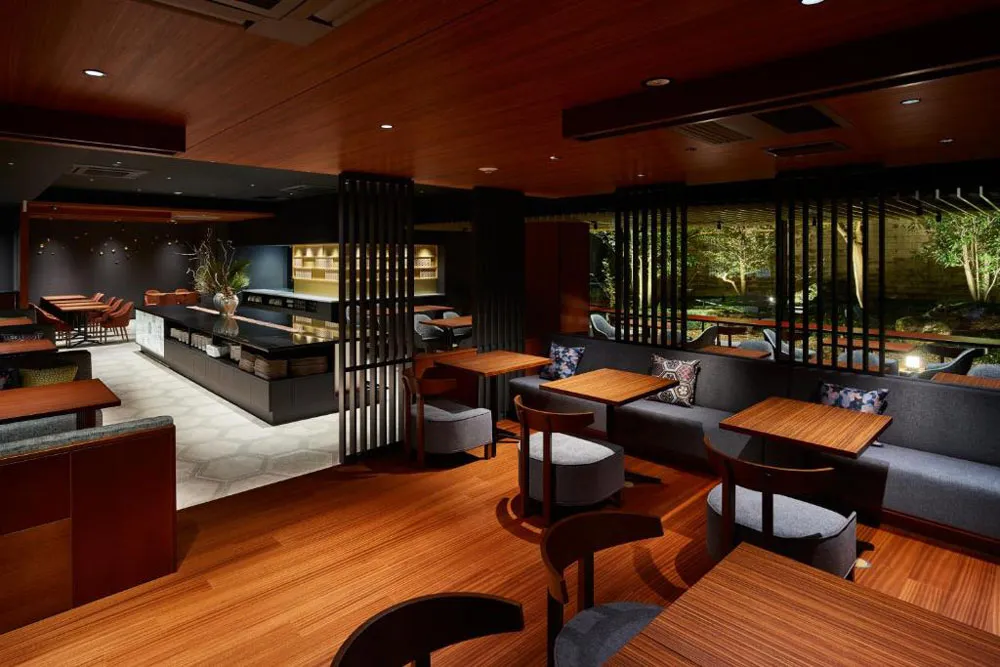DAY 4 – Tuesday 21: Time to hop on our first bullet train…
This morning transfer to the Tokyo Station where we board our Shinkansen to Kanazawa. We ride in the comfort of Grand Class, which will take us about 2.5 hours. We are met at Kanazawa station and transferred to our hotel.
We now have the honour of visiting a craft master (an artisan who has achieved a particular level of respect for their art). Our stop is to visit a master of Kaga Yuzen, the art of kimono dyeing, where delicate landscapes, flowers and birds are painted onto fine silk. Each kimono can take around three months to complete – and might see how the dyes are extracted from natural ingredients including plums, cherry blossom and persimmons.
We then visit the D.T. Suzuki Museum for some zen. D.T. Suzuki (1860-1966) was the Japanese writer responsible for introducing Zen Buddhism to the West, and this Museum is the perfect monument to the man and his work. Like Zen itself, the museum invites you to contemplate and empty your mind of distraction. The water “garden” outside the museum is sublime as is the fine traditional Japanese garden behind it.
Our evening is free to relax and rest. *Tonight is a prefect opportunity to try one of Kanazawa’s exceptional restaurants.
Overnight Accommodation: Mitsui Garden Kanazawa
Meals: Breakfast, Light meal on train
DAY 5 – Wednesday 22: Time to explore beautiful Kanzawa…
In the 17th century, the beautifully preserved castle town of Kanazawa used to a thriving centre for culture and the arts. It has a beautifully preserved Edo period streets and a rich culture of artisanship that has birthed some of the country’s most beloved traditional crafts.
This morning we visit Nagamachi, the old samurai district of Kanazawa. Here we find Nomura-ke, a restored samurai house with a stunning garden that showcases the artefacts during the golden era of the Japanese warriors. We then walk to the nearby Omicho Market, known throughout Japan for its fresh seafood and fine sushi. We make our way to the Higashi Chaya District, one of the three, well-preserved chaya districts in Kanazawa. (cha-ya which means ‘tea house’ in Japanese). We may stop at *Kaikarao Tea House. With over 200 years of history, Kaikaro is the largest chaya in the Higashi Chaya-gai District, being registered a city historical building. A cafe with an old sunken hearth is on site, where we might enjoy green tea and sweets. Its specialty is luxury desserts accompanied by gold leaf, one of Kanazawa’s traditional crafts.
We crossover the Asano-gawa River where we’ll find the smaller and less crowded Kazuemachi Chaya Area, which is stunning. This former geisha district also has a wonderful arcade of cherry trees. A stroll here along the banks of the Asano-gawa River, is a perfect way to end the day in Kanazawa.
Your evening is free, or we can dine at a local favourite.
Overnight Accomodation: Mitsui Garden Kanazawa
Meals: Breakfast, Lunch
DAY 6 – Thursday 23: UNESCO World heritage viewing in Shirakawa-go…
Today we journey out to Shirakawa-go, a village in the mountainous region of Gifu Prefecture. It represents one of Japan’s finest examples of ‘gassho-zukuri’, steeply-angled thatched-roof houses that protect the residents from the long winters with plentiful snowfall. Renowned as a UNESCO World Heritage Site preserving the traditional architecture and culture of central Japan’s mountain villages, Shirakawa-go is a lovely day out.
There are several museums in the village, and you can even hike up to the Ogi-Machi Castle Observation Point on the hillside north of the village, from where you can take in a panoramic view. (Shirakawa-go Village is also called Ogimachi Village.) *The roofs are rethatched in the spring using the grass that was harvested in the fall. We will eat lunch in the village before returning to Kanazawa.
On return to Kanazawa, your evening is free.
Overnight Accommodation: Mitsui Garden Kanazawa
Meals: Breakfast, Lunch
DAY 7 – Friday 24: Kaiseki style lunch and travel to Kyoto in style…
This morning we visit Kenroku-en Gardens. This spacious garden forms the green heart of Kanazawa and is ranked as one of the top three gardens in the country. The name means “six attributes garden,” which is a reference to a Chinese book that describes the six attributes of the perfect garden and is located adjacent to Kenroku-en is Kanazawa Castle. We have a Kaiseki style lunch nearby.
This afternoon, we leave Kanazawa, and board our Limited Express Thunderbird for Kyoto, home to some of Japan’s most important works of art, its richest culture and its most refined cuisine. Our train will take just over 2 hours to reach Kyoto Station. We are met at the station and transferred to our hotel for check in. Rest and relax. Your evening is free.
For those in the mood we can meet in the hotel bar this evening for a cocktail and a re-cap of our coming days in Kyoto.
Overnight Accommodation: Good Nature Hotel
Meals: Breakfast, Lunch
DAY 8 – Saturday 25: Unesco World Heritage Garden by day and Evening with Make by night…
This morning we visit Saihō-ji, *Koke-dera Moss Garden. Koke-dera, which means “Moss Temple” is one of the most aptly named temples in Kyoto. It’s a lush green paradise with over 120 types of moss present in the two-tiered garden, resembling a beautiful green carpet with many subtle shades. Saiho-ji Temple was made into a Zen temple in 1339 by the monk Muso Soseki, who is also said to have designed the upper tier of the garden. It is acclaimed by many as Kyoto’s most beautiful garden and is listed as a UNESCO World Heritage.
We then take a tour of rural Arashiyama. Arashiyama is filled with temples and shrines, but the star attraction is the sublime Arashiyama Bamboo Grove which we will take a walk through.We will visit the mesmerising Tenryuji Temple, the most important temple in Kyoto’s Arashiyama district; a sprawling Zen temple with one of the finest gardens in Kyoto and wonderful mountain views. We will have a very special lunch of a shojin-ryori (Zen vegetarian cuisine) on the temple grounds.
Then we visit a beautiful property called Okochi Sanso Villa and Garden. Formerly the estate of the famed film actor Okochi Denjiro (1898-1962), this sublime villa has mind-boggling gardens and the teahouse is a wabi-sabi gem. We return to the hotel for rest & refresh.
We can then meet in the bar for a quick cocktail before we depart for our fabulous evening with a Maiko. When hearing the word “Japan,” one’s mind immediately conjures up images of elegant and mysterious Geisha, with their white-painted faces and bright red lips, wrapped in an elegant kimono. Kyoto is considered the home of the Geiko (Geiko is the word that refers to geisha in the Kyoto dialect), and this evening, we have a unique opportunity to have dinner with a Maiko, an apprentice geiko – a younger woman who is training in the arts of the geiko.
Our dinner will be kaiseki ryori (traditional multi-course dinner) and during the dinner, there is ample opportunity to interact with the hostess and ask questions about her craft and the world of Maiko. The Maiko will perform traditional dances and even invite guests to play Japanese drinking games.
After this unforgettable experience, it is time to return to the hotel and wind down from the day’s events.
Overnight Accommodation: Good Nature Hotel
Meals: Breakfast, Lunch, Dinner





